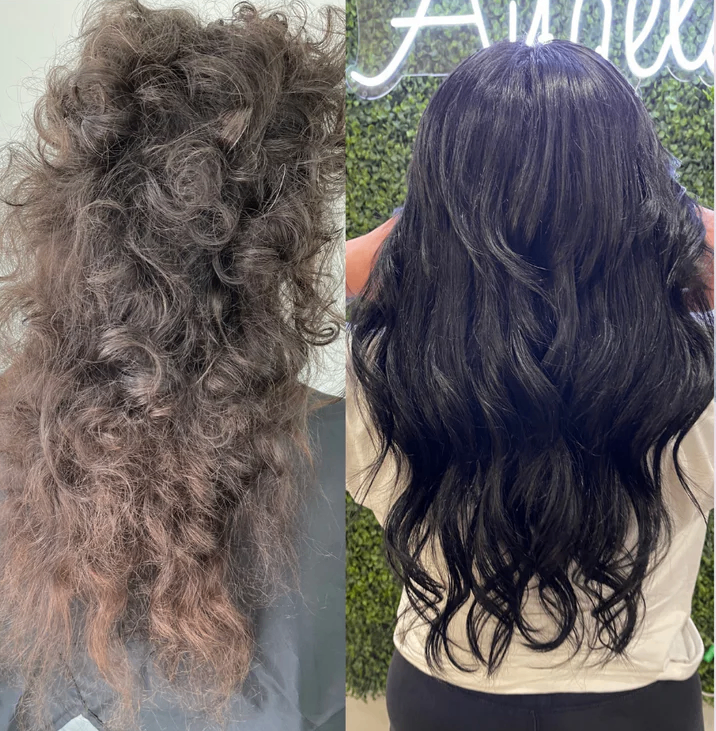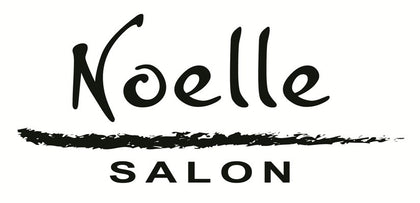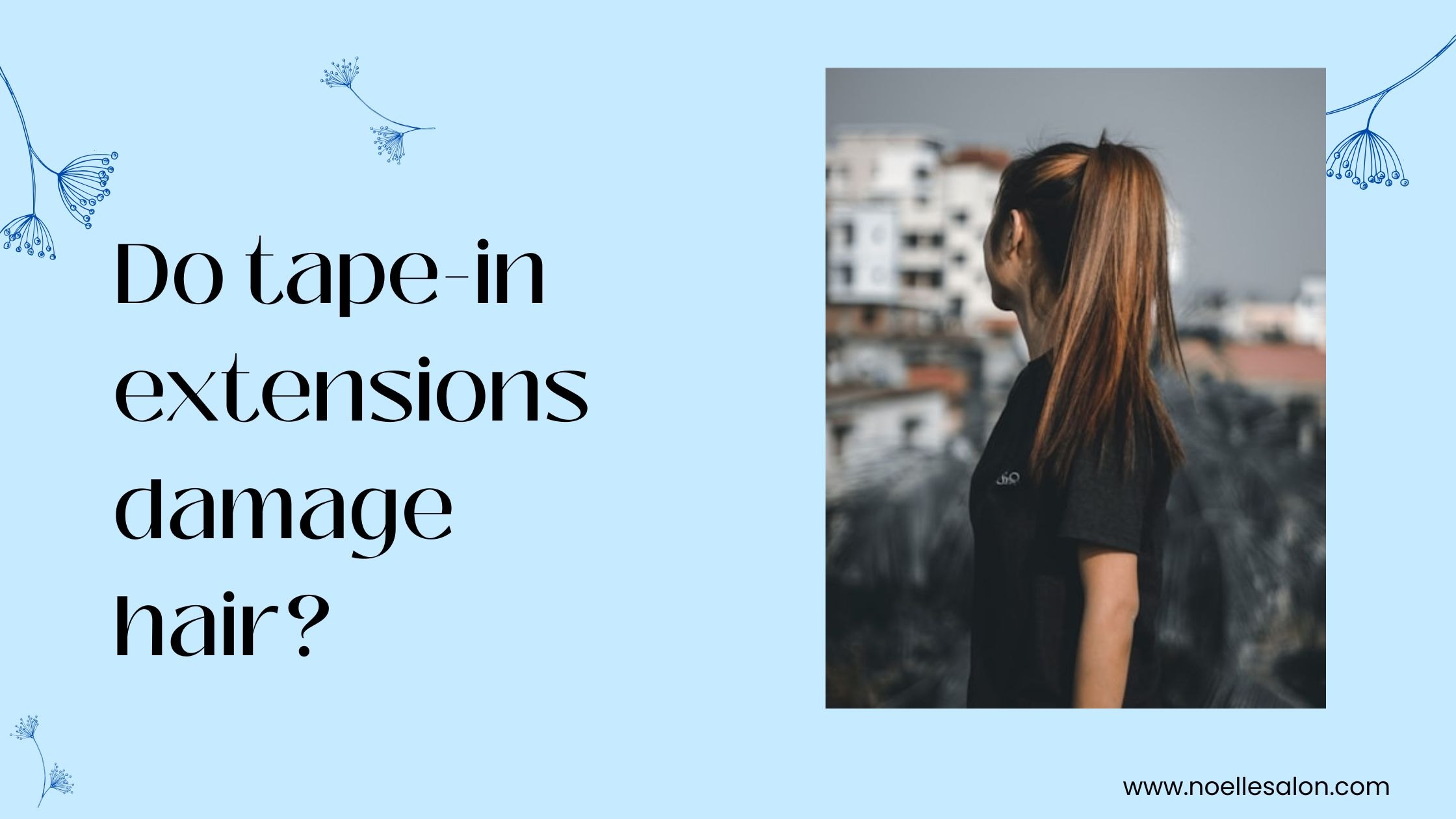Do Tape In Extensions Damage Hair? The Real Truth Revealed
TL;DR
|
|---|
Tape-in extensions are popular because they can add both volume and length to your own hair in a very natural way. Still, some people worry about hair loss and possible risks. Are tape extensions really bad for your hair? Does tape-in extensions damage hair permanently? Let's find out the answers to these critical questions in this post.
Do Tape-In Extensions Damage Hair?
If you are wondering - will tape-in extensions damage fine hair? The absolute answer is - THEY DON'T as long as they’re applied, maintained, and removed correctly. When done at a professional salon and cared for properly at home, tape-in extensions are one of the gentlest methods available. They lie flat against the scalp, require no heat or harsh chemicals, and cause minimal tension on your natural strands.
However, poor application, using low-quality products, or neglecting aftercare can lead to issues like breakage or residue buildup. As a result, you might experience issues like breakage, scalp irritation, or sticky residue buildup. To reiterate, all these problems are avoidable with proper professional guidance and upkeep. To further understand whether tape-in extensions damage hair, we need to know what tape-in extensions are actually made of.
What Are Tape-In Extensions Made Of?
 Tape-in extensions use wefts of hair that stick to your natural hair with strong adhesive tape. These can be made from human hair extensions or from synthetic hair strands. If you can, it is best to use human hair extensions. They are a good choice because they are easy to style and treat just like your own natural hair. There’s also a big variety of virgin hair textures, such as Body Wave, Kinky Curly, and Deep Curly. You can pick one that matches your style.
Tape-in extensions use wefts of hair that stick to your natural hair with strong adhesive tape. These can be made from human hair extensions or from synthetic hair strands. If you can, it is best to use human hair extensions. They are a good choice because they are easy to style and treat just like your own natural hair. There’s also a big variety of virgin hair textures, such as Body Wave, Kinky Curly, and Deep Curly. You can pick one that matches your style.
Synthetic hair extensions can be more affordable, but they are not as easy to style. They don't work well with heat tools, and may not look as close to real hair. These types of extensions save money but might not blend as well with natural hair. Now that you know the composition of tape-in extensions, let us understand how they are applied.
How Are Tape-In Extensions Applied?
The installation process for tape-in extensions needs care and skill if you want to prevent hair damage. Here are the different steps usually followed by a hair stylist while applying tape-in extensions:
-
Step 1: Parting of the Hair: The stylist begins by parting the natural hair into small, clean sections. This creates a solid base for applying the extensions.
-
Step 2: Prepare the Tape Extensions: Each extension weft comes pre-taped. The stylist peels the protective layer off the adhesive side to get it ready for application.
-
Step 3: Sandwich the Hair Between Tape Wefts: They then take a thin slice or small amount of natural hair and place it between two tape extension wefts, one below and one above, creating a “sandwich.” The adhesive on both sides of the weft secures the hair in place.
-
Step 4: Position Slightly Below the Root: They also ensure the extensions are applied in an inconspicuous area of your skin, such as below the scalp/parting. This not only hides the extension but also allows natural movement.
-
Step 5: Perform the Ponytail Test: After installation, they tie the hair into a ponytail. This checks if the tape extensions lay flat, feel comfortable, and blend seamlessly with the natural hair.
-
Step 6: Final Sensitivity Checks: They also ensure that all sections are properly placed and secured, avoiding slippage or discomfort. Their expertise is key for a smooth, flawless finish.
Tape-in hair extensions damage your natural hair condition only when your stylist doesn't follow a meticulous process and adhere to proper techniques. So what happens when that doesn't happen? Let's find out.
What are the Potential Risks of Not Applying Tape-In Extensions Properly?

Here are some primary concerns associated with tape-in extensions, especially when they are not applied properly or handled by an expert stylist:
-
When the initial application is not done right by the stylist, or you do not perform good hair care maintenance, you may get product buildup and feel signs of irritation on your scalp.
-
Traction alopecia is another concern, which happens when the hair follicles get pulled too much for a long time. This is a result of an improper hair extension method.
-
You could also have an allergic reaction to the adhesive tape used to keep the hair in place. This will result in scalp irritation. A good stylist tries to understand the integrity of your natural hair and will always perform a patch test on small sections of the natural hair and scalp before applying tape-in hair extensions completely. More importantly, they will always use premium quality hair extensions to avoid issues later on.
-
If there is excessive weight from heavy extensions, the root area can get pulled down. This may harm your natural healthy hair.
-
Your hair can break if the extensions are not put in properly and do not have a strong, secure base.
-
Not following a meticulous removal process can also damage your natural hair.
-
If you use heavy conditioners often or do not follow proper shampooing techniques, the adhesive tape bonds can get weak.
To avoid most risks and get good results, you should keep up with regular checks. It is good to talk with a trained professional stylist and get help when you need it for your natural hair.
Who Is Most at Risk for Damage?
Some people are more likely to have problems with tape-in extensions. Let’s take a look at who might be more prone:
-
If your scalp is sensitive, you should be careful. The weight and adhesive tape can pull on the root area, causing irritation.
-
If the hair density is low, this can make the attachment points easy to see.
-
If you have traction alopecia or problems with your scalp health, you will need the right option for you. The primary causes of this condition are improper installation or excessive
You should ask a professional stylist to look at your hair texture. Only they will know the answer to the question - can tape in extensions damage your hair?
How to Prevent Hair Damage from Tape-in Extensions?
It is very easy to prevent damage from tape-in hair extensions if you follow the two rules discussed below:
Rule 1: Choose a Skilled Stylist
Choosing the right professional stylist matters a lot for a great experience before and after the application of the hair extensions. For instance, a hair specialist from Noelle Salon knows how to install hair extensions properly, knows the potential outcomes of every small action they take, also know what helps tape-in hair extensions last longer.
Take a look at this video on how an expert stylist from Noelle Salon installs hair extensions with great care and dexterity.
So, how do you find the best stylist for hair extension? Simple, look for a hair stylist with a good reputation. It could be through word-of-mouth or even positive client reviews on social media. These social proofs show that the stylist can be trusted. Try to schedule a meeting before you decide, too. If your stylist pays close attention to your needs and offers premium hair extensions, it is a good sign.
Rule 2: Proper Aftercare and Maintenance
Maintaining tape-in extensions requires you to follow some specific care instructions:
-
Use products made for extensions. This helps keep the adhesive and hair strong.
-
Brush your hair softly. This stops any pulling or damage to your natural hair.
-
Remove the extensions with care. Always use the right adhesive solutions for this.
-
Try to wait between your shampoo sessions. This makes the extensions look good and keeps them in place for longer.
-
Don’t use too many heat tools near where the extensions stick to your hair. This will protect the adhesives and keep a flawless installation.
Long story short, stick to a regular routine to take care of your natural hair, keep your scalp health and maintain your hair density. This way, your extensions will also look great and last long.
How Noelle Salon can Help with your Hair Extensions?
At Noelle Salon, we truly care about the health of your natural hair. That’s why we take every step to ensure tape-in extensions are applied, maintained, and removed the right way according to your hair type.
Our experienced team uses high-quality, salon-grade adhesives and applies each weft with precision to avoid putting stress on your roots. We also make sure you leave with all the tips you need to care for your extensions at home. And when it’s time for removal, we do it gently to prevent any damage or residue. With us, you can enjoy the volume and length you love, without compromising your hair’s health. Book an appointment now.
Frequently Asked Questions
Can tape-in extensions cause permanent hair loss?
Tape extensions do not lead to permanent hair loss if they are put in right. But if the hair gets pulled too hard, the hair follicles can get stressed. This may cause traction alopecia. To help the scalp's health, and to lower the chance of potential damage, make sure to always consult an experienced hair stylist.
Are tape-in extensions safe for fine or thin hair?
Tape extensions can be good for thin hair when you use them the right way. Using proper techniques helps to make sure the tape extensions will not pull on your natural hair or show where the extensions are put in. You should talk to a professional stylist to look at the risks before you get tape extensions for thin hair.
How often should tape-ins be replaced?
Tape-in extensions usually stay in for a specific period of 6 to 8 weeks. During your installation appointment, a professional stylist needs to move them so the residual oils from your natural hair will not break down the bonds. This makes sure they last longer and look good.
Can I style tape-in extensions with heat tools?
Yes, you can use heat tools on hair extensions that are made with good quality. It is better to use human hair extensions, as they give you more ways to style. Before you use any heat, use a heat protectant spray, and be extra careful with synthetic hair strands. This step helps to keep the look and makes sure that you get the best out of the product usage.
What are signs my hair is being damaged by tape-ins?
Common signs that your hair might be damaged from tape-in extensions are excessive shedding, broken hairs, and thinning where the extensions are attached. You might also get an itchy or sore scalp. If you see any of these signs, talk to a professional stylist for help.





